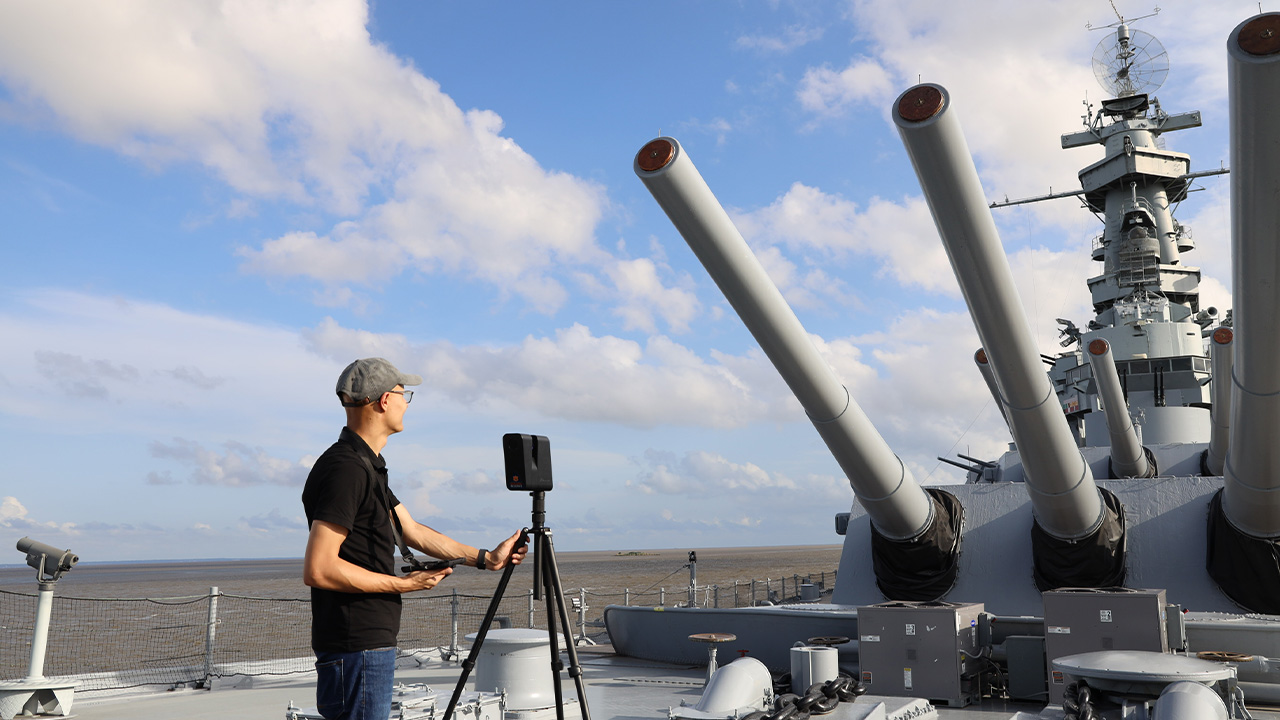content body

Liu created the virtual tour using 360-degree cameras and LiDAR scanners, capturing images of both the ship’s deck and its interior.
Just in time for Veterans Day, Auburn University Professor Junshan Liu has created a virtual tour of the USS Alabama (BB-60), a World War II battleship on display in Mobile, Alabama.
The virtual tour, which is now available on the USS Alabama Battleship Memorial Park website, was created to allow World War II veterans who served on the ship to experience a visit without having to navigate the accessibility challenges of the ship or travel to Mobile. Liu, who teaches building science in Auburn’s College of Architecture, Design and Construction, previously created a virtual tour of the USS Drum, which is also available online. Liu completed both projects with Danielle Willkens, an associate professor at Georgia Institute of Technology.
Liu and Willkens traveled to Mobile this summer to document the battleship using 360-degree cameras and LiDAR scanners, capturing images of both the ship’s deck and its interior, and then worked with USS Alabama Battleship Memorial Park staff to create narration for the highly engaging virtual tour. Liu, who grew up in Tianjin, China, is a history enthusiast who enjoys studying world history and military history, especially World War II. His work focuses on the preservation of historical structures as a tangible and meaningful way to connect people with the past.
“These structures are more than just buildings, bridges, monuments or ships; they are vessels of memory that carry the stories, struggles and achievements of previous generations,” he said. “By preserving them, we provide a physical link to our shared heritage, which allows people to experience history directly rather than just through text or images. Significant historic structures like the USS Alabama inspire reflection on the commitment, sacrifices and resilience that helped to shape our present, offering future generations a chance to learn from and honor that legacy.”
In addition to creating the USS Alabama and USS Drum tours, Liu and Willkens’ other historical work includes documenting the Edmund Pettus Bridge as it stood on Bloody Sunday in Selma, Alabama. Working alongside Auburn architecture and history faculty, they recently received a grant from the National Park Service to continue documenting and restoring one of the state’s almost 400 Rosenwald schools — structures built throughout the South between 1914 and 1932 to further the education of African American children.
Liu is eager to continue using technology to make history more widely accessible to veterans, their loved ones and future generations. While working on the USS Drum, he was able to share a virtual tour of the submarine with a former crew member living in Indiana, and the experience was one he will never forget.
“Seeing his reaction — his joy and sense of connection — as he navigated through the submarine he had once served on was incredibly moving,” Liu said. “Moments like these highlight the value of our work: to ensure veterans and individuals with limited mobility can experience these historic vessels, even if physical barriers prevent them from visiting in person.”





